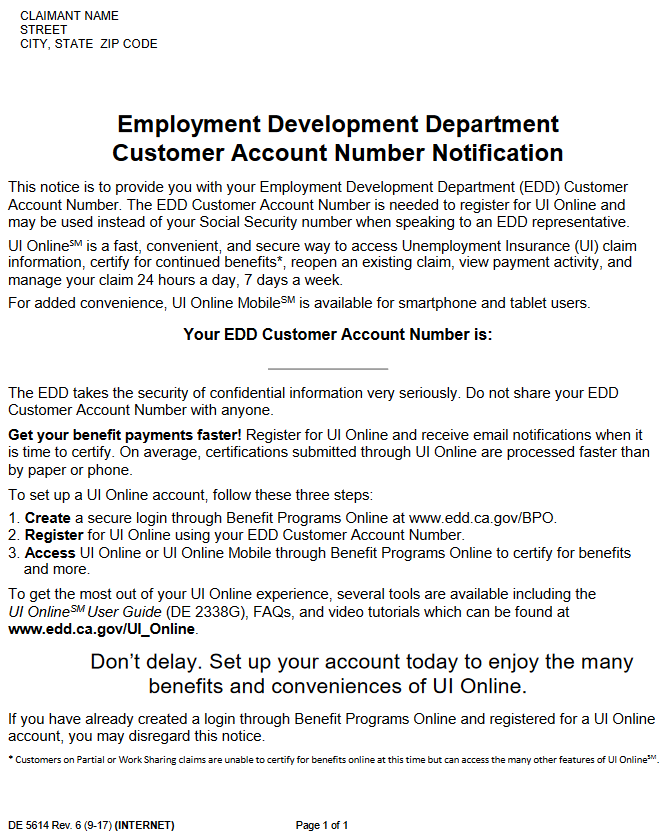WASHINGTON — President Trump said Friday that he will once again attempt to end a…
Un
Five Recent Times California Fought Trump on Immigration—and Why They All Were Mistakes
A recent Sacramento Bee article points out five times California fought President Trump on immigration within the last few years. Predictably, it omits the consequences of each of its actions. Below are how its elected and appointed officials created or could have created problems for the state and the nation: “A federal appeals court,
A recent Sacramento Bee article points out five times California fought President Trump on immigration within the last few years. Predictably, it omits the consequences of each of its actions. Below are how its elected and appointed officials created or could have created problems for the state and the nation:
“A federal appeals court in California ruled President Trump’s diversion of $2.5 billion from military construction projects to fund the Mexico border wall ‘unlawful.’”
Sabotaging funding for the southern border wall is reckless. Not only does southern California border Mexico, it also boasts the busiest land crossing in the entire world: The San Ysidro Port of Entry. With border walls proven to deter narcotic flows, illegal immigration, and dangerous criminals, it is absurd that the state stymied this funding. California has the largest illegal alien population in the United States—costing it more than $23 billion annually (the most of any U.S. state). These figures are likely to increase with its decision to block border wall funding.
“In May 2018, California fought against the addition of a citizenship question to the 2020 Census when [Attorney General Xavier] Becerra filed a lawsuit against the Trump administration in the U.S. District Court in Northern California.”
The addition of a citizenship question to the 2020 Census would have not been unprecedented and could have brought numerous advantages to California and the rest of the nation. Article I, Section 2 of the U.S. Constitution requires the federal government to conduct a nationwide count of every person living in the United States every 10 years and questions involving citizenship occurred in surveys as early as 1820 and as recently as 1950.
Similarly, the American Community Survey (ACS) collects demographic data on an ongoing basis and asks about citizenship status. All of this data helps determine how many individuals, both legal and illegal, are living in each U.S. state. These figures ultimately determine the distribution of federal funding and electoral votes. In doing so, California undermined the integrity of the system under which federal funds are disbursed and electoral systems by opposing the inclusion of this question.
“California Gov. Gavin Newsom signed a new law on Oct. 11, 2019 to phase out private, for-profit immigration detention facilities and prisons in the state by 2028.”
Eliminating immigration detentions jeopardizes public safety and undermines the nation’s judicial system. With a reduction in immigration detentions, public safety could become compromised as many of the detainees have been convicted of more serious crimes than immigration offenses.
Additionally, those released with a pending court date more often than not do not have valid asylum claims and are unlikely to show up to their hearing. With immigration detentions already nearly maxed out, it is irresponsible that its governor signed onto this law.
“The ‘public charge’ rule, proposed by the Trump administration in 2019, has had what advocates call a “chilling effect” among immigrant communities. The policy denies an immigrant’s green card or visa application if they are likely to be dependent on public assistance, like food stamps or other programs. Last summer, California Gov. Gavin Newsom and Becerra filed a lawsuit to block the policy.”
Public charge laws have existed for centuries and are based on the rational principle that immigrants be self-sufficient. The nation must prioritize self-sufficiency and financial responsibility as most its social safety net is financed by taxpayers. Providing millions of dollars in benefits to people who are fiscal burdens to the nation would be careless. Today, almost two-thirds (63 percent) of all immigrant-led households use at least one welfare program – compared to only 35 percent of native-headed households. With welfare programs and illegal immigration costing the country hundreds of billions annually, finite resources must be safeguarded for other societal needs.
“A year after Trump’s inauguration, the president sought to increase vetting procedures for foreign nationals traveling to the U.S in 2017. Trump signed an executive order suspending foreign nationals from seven mostly Muslim countries, including Venezuela, from traveling to the country.”
The president’s travel ban addresses legitimate national security concerns identified by both his administration and those of his predecessor. Congress has delegated to the president clear, unambiguous authority to suspend entry to any alien or class of aliens deemed detrimental to the interests of the United States. Though the president’s order was eventually upheld by the Supreme Court of the United States, California’s judicial activism could have compromised public safety and enabled harmful actors abroad the opportunity to wreak havoc on the nation.
As seen by these five actions, the state of California has misguided priorities. Enhancing public safety, reducing fiscal costs, and upholding the rule of law, should be on the top of the state’s interests or really any state’s interests, but instead, it has succumbed to the interests of the open borders lobby and the cosmopolitan agenda.
Source: Five Recent Times California Fought Trump on Immigration—and Why They All Were Mistakes
,
Un
FLAG.DOL.GOV: Essential Resource for PERM Labor Certification Recruitment Compliance
The Foreign Labor Application Gateway (FLAG) at https://flag.dol.gov/ serves as the Department of Labor’s comprehensive digital portal for employers seeking to hire foreign workers through various employment-based immigration programs. For employers navigating the complex PERM Labor Certification process, FLAG has become an indispensable tool that streamlines compliance with recruitment advertising requirements outlined in 20 CFR,
The Foreign Labor Application Gateway (FLAG) at https://flag.dol.gov/ serves as the Department of Labor’s comprehensive digital portal for employers seeking to hire foreign workers through various employment-based immigration programs. For employers navigating the complex PERM Labor Certification process, FLAG has become an indispensable tool that streamlines compliance with recruitment advertising requirements outlined in 20 CFR 656.17.
When conducting PERM recruitment activities, employers must meticulously document their good faith efforts to recruit U.S. workers before hiring foreign talent. FLAG integrates seamlessly with these requirements by providing a centralized platform to submit, track, and manage labor certification applications. The system specifically supports employers in demonstrating compliance with mandatory recruitment steps, including the placement of job orders with State Workforce Agencies, professional journal advertisements, and additional recruitment activities as specified under 20 CFR 656.17(e). By utilizing FLAG, employers can ensure their recruitment efforts align with Department of Labor standards, potentially reducing the risk of audit or denial during the PERM certification process.
PERM Recruitment Requirements and FLAG Integration
FLAG’s role in the PERM process becomes particularly valuable when addressing the specific recruitment documentation requirements of 20 CFR 656.17. The regulation mandates that employers conduct recruitment steps within 180 days of filing, including two Sunday newspaper advertisements, a 30-day job order with the State Workforce Agency, and three additional recruitment activities from a designated list. FLAG not only facilitates the proper filing of these recruitment efforts but also helps employers maintain the required recruitment report detailing lawful job-related reasons for rejecting U.S. applicants.
Recent updates to FLAG have enhanced its functionality for PERM applications, allowing employers to more efficiently upload supporting documentation, track prevailing wage determinations, and monitor case status in real-time. For immigration attorneys and HR professionals managing PERM cases, FLAG’s user interface provides critical visibility into the certification process, helping ensure that all regulatory requirements are met before and during the application period. As labor certification requirements continue to evolve, FLAG remains the authoritative platform for employers seeking to navigate PERM recruitment compliance successfully.
,
Un
THE H1B GUY NEWS (12/3/2021) H1B in Decline and Documented Dreamers in Limbo

The H1B Guy News for the week ending December 3, 2021.
Topics:
H1B in Decline
Documented Dreamers in Limbo
The Number of Immigrant Workers With H1-B Visas Drops the Most in a Decade
https://www.bloomberg.com/news/articl…
Ross, Padilla Lead 49 Colleagues in Urging DHS to Expand DACA Eligibility to Documented Dreamers
https://ross.house.gov/media/press-re…
Read the full post
Subscribe to The H1B Guy Podcast
Join The H1B Guy Channel and Chat on Telegram
Follow The H1B Guy on Twitter
Un
SWA Job Order California: What is an EDD Number?

What is an EDD Number? An EDD Number is technically the state unemployment insurance identification number that the Employment Development Department of California issues a company. Here’s a visual example from the UI Online FAQ: How do I register for an EDD Number? To register for an EDD Number (in California) use this link: https://www.edd.ca.gov/payroll_taxes/e-Services_for_Business.htm,
What is an EDD Number?
An EDD Number is technically the state unemployment insurance identification number that the Employment Development Department of California issues a company.
Here’s a visual example from the UI Online FAQ:
How do I register for an EDD Number?
To register for an EDD Number (in California) use this link: https://www.edd.ca.gov/payroll_taxes/e-Services_for_Business.htm
The EDD Number form will look like this when you receive it. (see below image)
It’s on a form known as DE-5614. Click here for a PDF sample: https://www.edd.ca.gov/pdf_pub_ctr/de5614.pdf
How do I find my company’s EDD Number?
Per the EDD do as follows:
All Unemployment Insurance customers who file a new claim will automatically receive their Employment Development Department (EDD) Customer Account Number (DE 5614) letter within 10 business days of filing.
If you have lost, misplaced, or never received your EDD Customer Account Number, contact the EDD:
Online: Go to Ask EDD and select the category Unemployment Insurance Benefits, the sub category UI Online, and the topic EDD Customer Account Number. Select Continue at the bottom of the page to begin the process of submitting your message.
By Phone: Call 1-800-300-5616 from 8 a.m. to 8 p.m. (Pacific time), seven days a week.
Why do I need an EDD Number for PERM Recruitment?
What else can I use my EDD Number for?
UI Online
Register for UI Online
CalJobs Registration
, 
-

 Un5 years ago
Un5 years agoPERM Process Flow Chart
-

 Enforcement News15 years ago
Enforcement News15 years agoFake ID Makers Arrested In Dallas
-

 BREAKING5 years ago
BREAKING5 years agoPERM Recruitment Advertising, How It Works.
-

 Today's News13 years ago
Today's News13 years agoImmigration: Gangster Tats = Visa Denied
-

 BREAKING5 years ago
BREAKING5 years agoUSCIS Statement Throws Constitution Out the Window
-

 BREAKING3 years ago
BREAKING3 years agoHouse Republicans push asylum restrictions, border security
-

 BREAKING4 years ago
BREAKING4 years agoDeSantis parts with Trump in response to Surfside tragedy
-

 BREAKING3 years ago
BREAKING3 years agoBiden is ignoring immigration issues, voters say in poll





